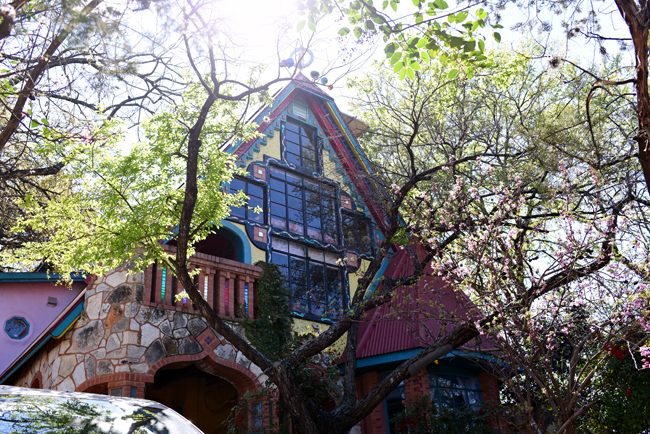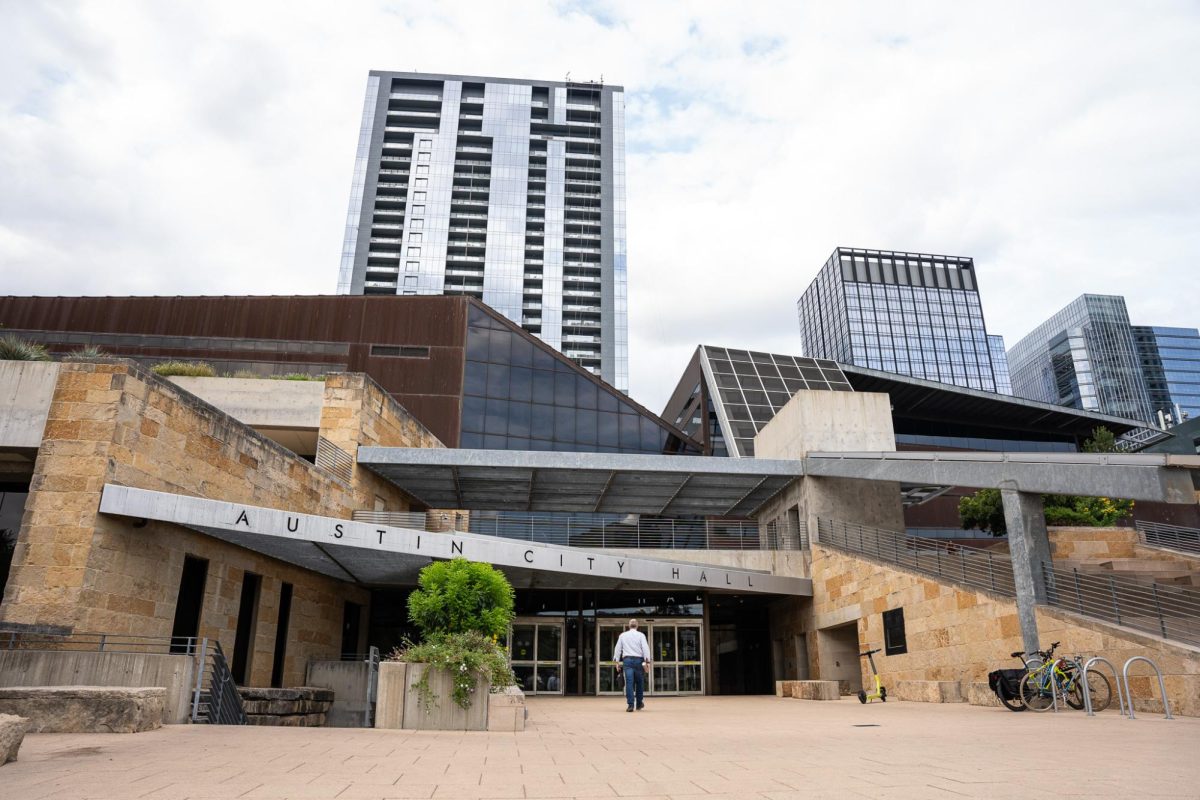Over the past 35 years, local mixed-media artist James Talbot has watched Austin change from the front porch swing in his “Peter Pan” Neverland-inspired funhouse.
“It’s like a new city has floated up to my ship here instead of me going someplace new,” Talbot said.
In 1979, Talbot bought his 1,110 square foot house several blocks west of South Congress Avenue for $13,000. He immediately started remodeling to create a three-story, 2,500-square-foot wonderland he calls Casa Neverlandia, which the first movie Talbot ever watched, “Peter Pan,” inspired.
Talbot hosts hour-long tours of his home, taking spectators through Casa Neverlandia while explaining each of his design choices. Tours can be scheduled by emailing or calling Talbot directly.
“I’ve noticed that people like delight,” Talbot said. “They like fun. They like less rational approaches to things. They like playfulness, and that’s a language I understand. That’s my strong suit.”
Vibrant colors and reflective mosaic tiles coat the house’s exterior. Instead of a conventional doorbell, a xylophone hangs from the front door. The aesthetic continues inside with a talk tube, which allows communication between rooms, and four altars that represent earth, wind, fire and water.
In the backyard, an elevated footbridge connects the third floor of the house to a four-story wooden tower. Talbot said he built the tower as part of a self-growth seminar that instructed participants to “do the impossible” in 24 hours.
Although he didn’t make deadline, Talbot said, with his friends’ help, he was able to sleep on the tower just 60 hours after the project started.
“When you read fairy tales, and the protagonist is given an impossible task, what happens?” Talbot said. “The mice come in; the insects come in; something from out of nowhere happens.”
Casa Neverlandia’s construction has largely been a collaborative effort. In 1996, Talbot’s former partner, Kay Pils, moved in and helped him with much of the redesign. Talbot said Pils left after the feel of the neighborhood changed, as rising costs forced out the local artists and hippies.
Talbot said the gentrification of the Bouldin Creek area, where Casa Neverlandia stands, jaded him, too. This process, which began a couple of decades ago, has left Talbot surrounded by a neighborhood drastically different from the one he moved into.
Nevertheless, Talbot said he does not plan on leaving. Talbot said Casa Neverlandia is a continual work in progress both in terms of decor and environmental sustainability.
Despite its size and extravagance, Casa Neverlandia’s environmental impact is significantly lower than most homes in the area. It uses solar panels, a grey water collection system that funnels water to trees in the backyard, compost bins, a composting toilet, and the house lacks both air conditioning and heating. Talbot said his electric bill ranges from $10-$20 per month.
“I was a boy scout, and there is something about leaving your campsite as good or better than you found it,” Talbot said. “There is just something about not pissing in your water supply — not fouling your nest.”
Aside from working on Casa Neverlandia, Talbot has created pieces for Bouldin Creek Café and The Green Classroom, and he made the sculpture reminiscent of a spider on South Congress Avenue.
In the future, Talbot said he hopes to start a casual lecture series about fantasy architecture, which is architecture that focuses on aesthetic appeal over practicality. He said fantasy architecture, which his house embodies, appeals to the masses because it is not rational.
“Our attraction to a lot of these ‘fantasy places’ has some kind of [spiritual] connection to this part of ourselves that we don’t know very well or trust as much but is every bit as important to us,” Talbot said.




















